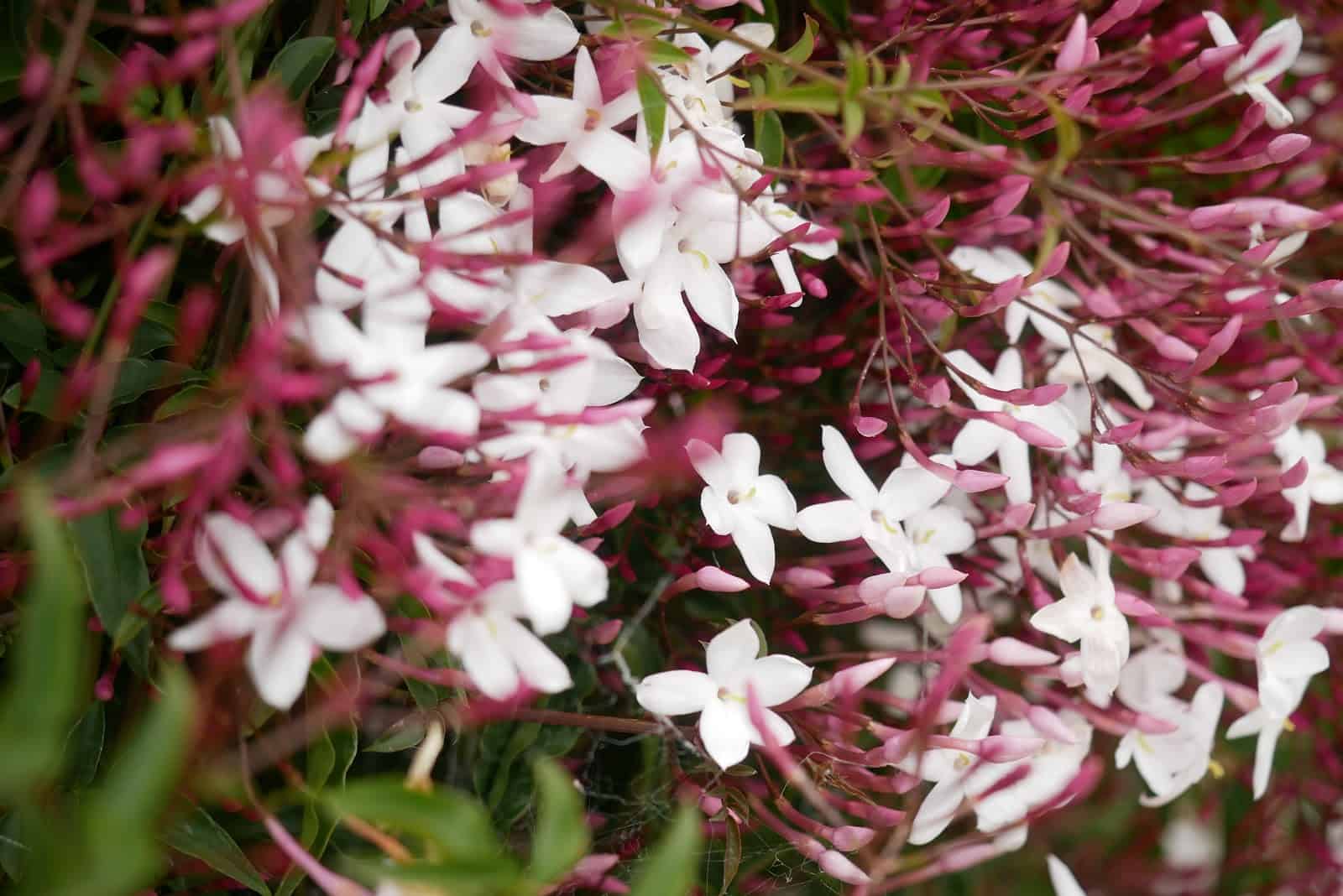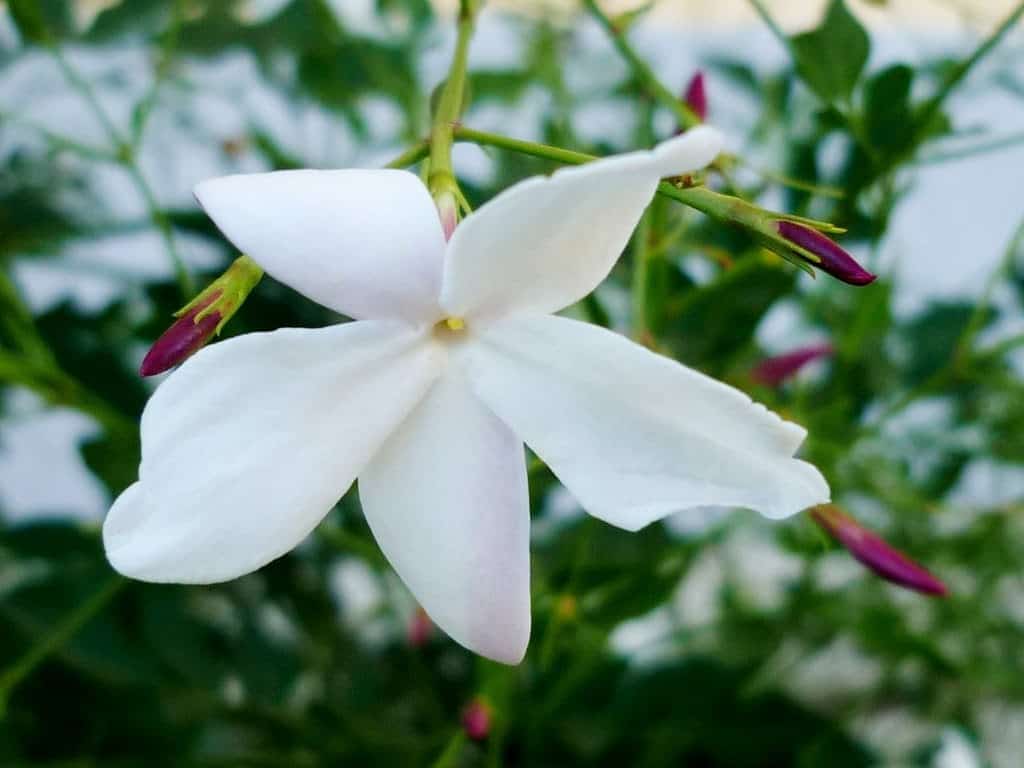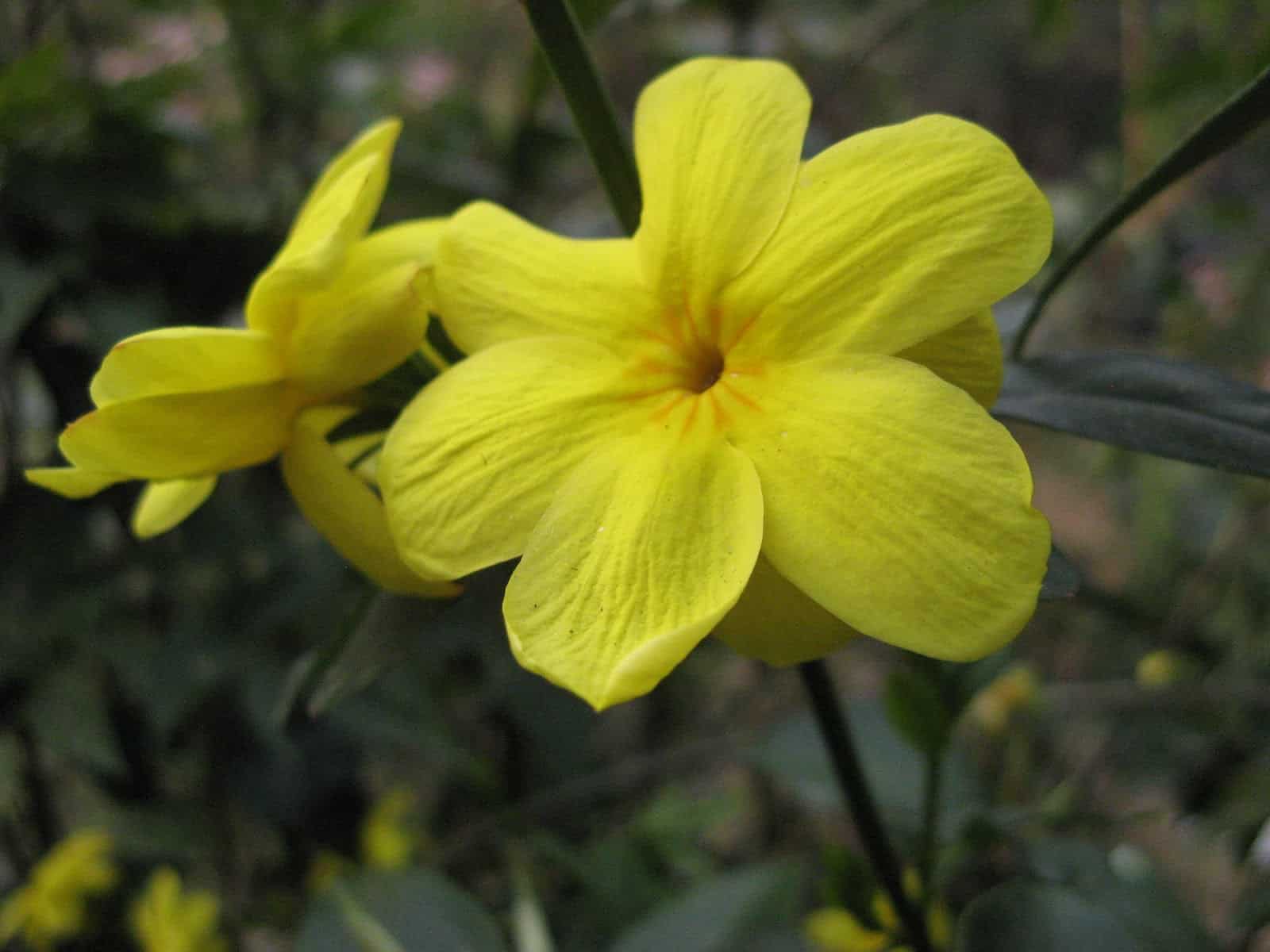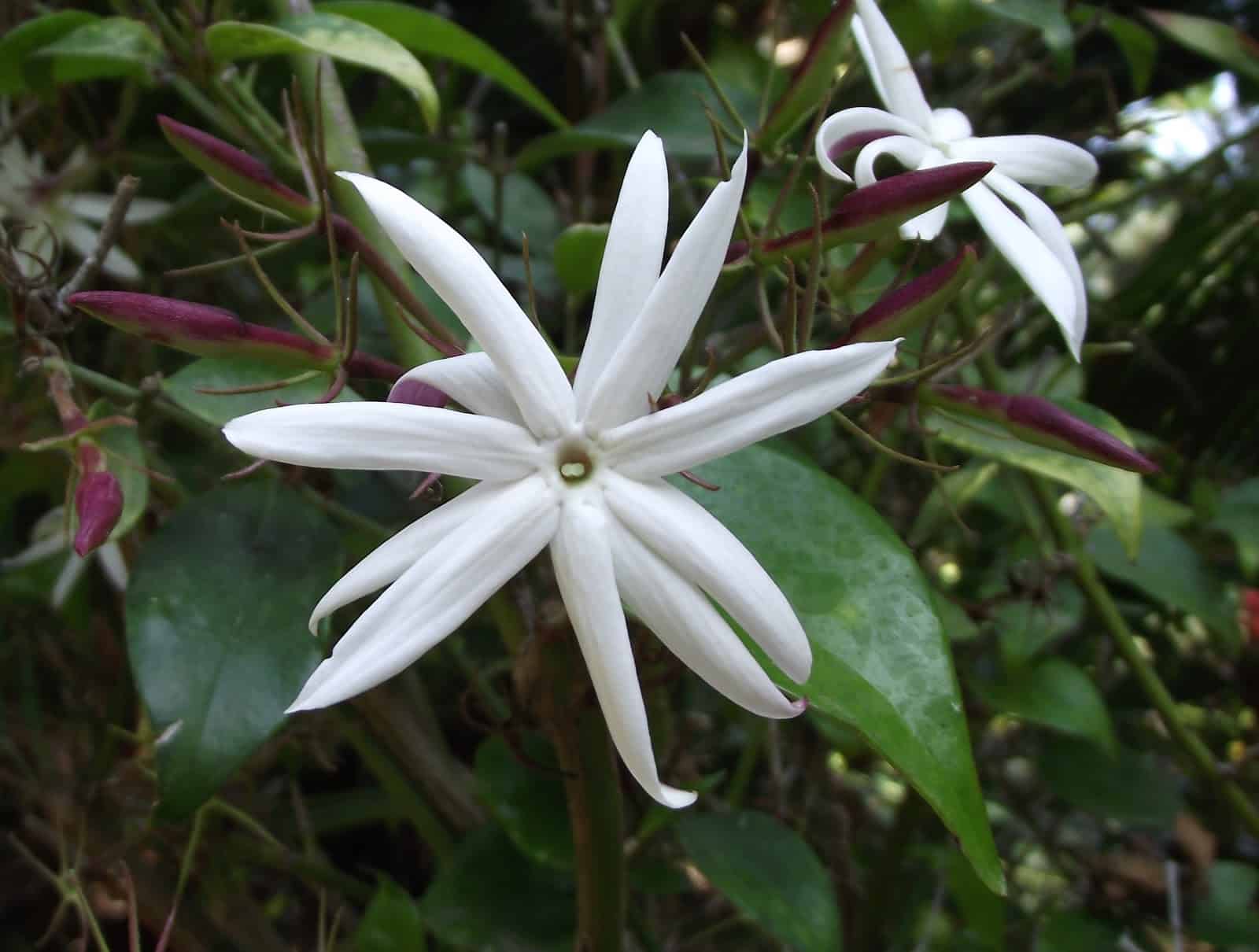Flower Glossary is reader-supported. When you buy through links on our site, we may earn an affiliate commission.
Jasmine flowers are delicate blooms, typically with small white flowers. They have a scent that is tropical and alluring, and they’re a wonderful way to attract bees to your garden for pollination.
While the original tropical varieties will not grow in most climates, cultivars have been made to grow in more temperate regions. If you’ve thought about adding jasmine to your garden or just want to learn more about these delightfully scented flowers, read on.
Table of Contents
Jasmine Flower Meaning and Use
The word “jasmine” comes from the Persian word “Yasmīn” or “ياسمين”. It is a common female name, and originates from the meaning “gift of God”.
Jasmine is the national flower of Pakistan and it’s often used in garlands there. In a traditional Pakistani wedding, garlands of white jasmine and red roses adorn the bride and groom. The same type of garlands may also be placed on graves in Pakistan with the meaning of a final farewell.
Jasmine is also a wedding flower in Indonesia, while in the Philippines garlands of jasmine are used for religious ceremonies to symbolize purity. Thai people believe jasmine to be the symbol of motherhood, along with the meanings of love and respect. For Americans, this bloom is used to symbolize beauty, love, and romantic affection. For some, this bloom symbolizes good luck or innocence.
In ayurvedic medicine, the leaves of jasmine plants are prized as an herbal remedy. They’re used to lower cholesterol and keep hearts healthy. They contain high volumes of antioxidants.
The scent of jasmine flowers is said to be very relaxing. In some cultures, jasmine garlands are hung over beds for this reason. Many gardeners plant jasmine beneath bedroom windows to enjoy the delightful scent on the night air.
Types of Jasmine Flowers
There are actually over 200 species of jasmine, originally hailing from tropical and subtropical climates. Here are a few of the most popular varieties.
Common Jasmine (Jasminum Officinale)
This variety is probably what you picture when you think of jasmine. Common jasmine is a vining shrub that can grow up to 15 feet in height. It requires full sun and features small clusters of 3-5 white flowers that bloom in the late summer.
Angel Wing Jasmine (Jasminum Nitidum)
Angel wing jasmine is sometimes called pinwheel jasmine, shining jasmine, or star jasmine. It is a climbing vine with uniquely shaped white flowers. The creamy white petals of these two-inch flowers resemble a starburst or pinwheel, though they feature the same distinctive scent as common jasmine flowers.
 Image courtesy of Sgerbic / CC BY-SA
Image courtesy of Sgerbic / CC BY-SA
Pink Jasmine (Jasminum Polyanthum)
This lovely climbing vine features numerous bright pink buds that bloom into creamy white jasmine flowers. This variety is prized because the sheer number of flowers on a single vine can multiply the plant’s distinctive scent. In warm climates, it may even bloom year-round, producing that lovely jasmine perfume throughout the seasons.

Image courtesy of Jesús Cabrera / CC BY 2.0 (https://creativecommons.org/licenses/by/2.0/)
Royal Jasmine (Jasminium Grandiflorum)
Royal jasmine is sometimes called Spanish jasmine or Catalan jasmine. It’s actually native to South Asia, East and Northeast Africa, the Arabian peninsula, and some regions of China.
 Image courtesy of Sudan Shrestha / CC BY-SA (https://creativecommons.org/licenses/by-sa/3.0)
Image courtesy of Sudan Shrestha / CC BY-SA (https://creativecommons.org/licenses/by-sa/3.0)
Showy Jasmine (Jasminium Floridum)
This variety is a beautiful yellow color, rather than the more common white. The blooms grow on a quick-growing shrub, up to four feet in height. As with most jasmine, showy jasmine flowers need full sun. These blooms can appear throughout the entire spring and summer.
How to Grow Jasmine Flowers
Because jasmine flowers originated in tropical climates, many varieties will only do well in the warmest and wettest parts of the country. Fortunately, many cultivars have been created to grow in temperate zones, but you’ll still want to ensure they get plenty of moisture, have well-drained soil, and are protected from winter weather.
When planting outdoors, ensure you’ve chosen a warm, sheltered environment for your jasmine flowers. If you’re planting a vine variety, you’ll want to use a trellis or other support structure for the plant to cling to.
Fertilize your jasmine in early spring, before you begin to see new growth. To promote branching and create a fuller, bushy look on your trellis, pinch off the tips of your vines in the second year. Be careful of spider mites, as jasmine is particularly susceptible to harm from them.
However, if you prefer to plant your jasmine indoors or live in a cold climate where outdoor jasmine is not possible, there are several dwarf varieties that can do well as houseplants. Ensure they are placed in a sunny part of the house and given even moisture.
Fertilize potted jasmine twice per year and always water from the bottom to keep the glossy dark leaves looking pristine. When it’s time to repot your plant, do so in the early spring before new growth.
————————
Whether you choose to enjoy the scent of jasmine drifting on the wind or prefer to keep a pot indoors for enjoyment, these beautiful blooms are a wonderful addition to your home or garden. You may also be interested in other types of white flowers or tropical flowering plants. Looking for something special or unique for your garden? We have information on over 170 kinds of flowers for you to choose from.


